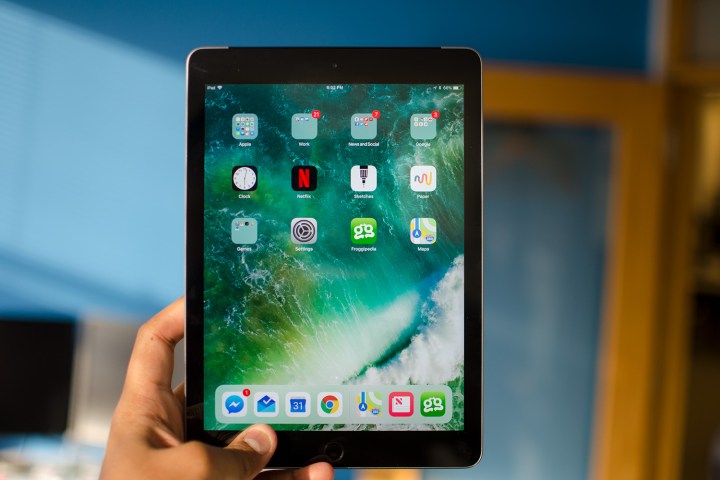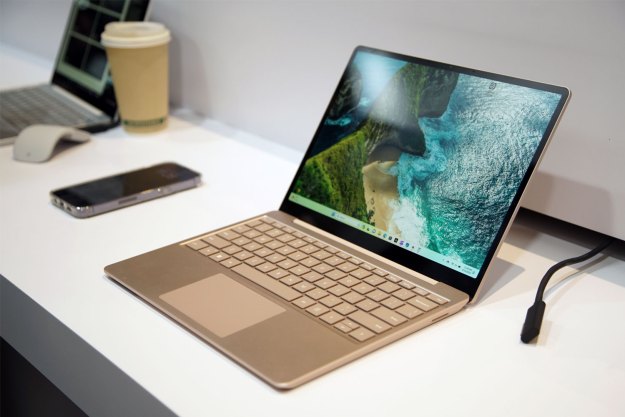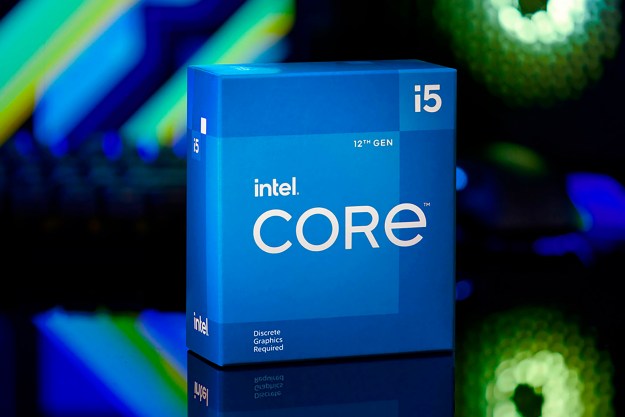The tablet market may be less mainstream than it once was thanks to ultra-thins and 2-in-1 PCs, but contenders like Apple and Microsoft are still trying to cash in on the entry-level tablet market. Enter the iPad and Microsoft Go which can offer laptop-like experiences without the laptop costs.
In this battle for your bucks, we compared these devices to examine their similarities and their differences so you can decide what’s best for you. From afar the differences are clear — Windows 10 vs iPadOS — but there may be other factors that could entice you to switch from one to the other.
Read on for your Surface Go vs iPad battle.
Design

Unlike the Pro and Air models, Apple’s latest iPad still sports the classic design with bulky bezels and a physical Home button on the front. It’s the least attractive of the three variants, but that translates to a cheaper price than its prettier siblings.
The original Surface Go, meanwhile, isn’t all that prettier with its fat borders around the screen, but it also doesn’t have the same button eyesore seen with Apple’s old-school design. Its dark color scheme rivals Apple’s Silver and Gold color options so you’re not distracted by white borders when viewing content. At least Apple’s Space Gray scheme is less straining on the eyes.
Overall, the look and feel of both devices are still premium despite our complaints, but not the most cutting edge in terms of design. They feel sturdy and solid in the hand, though the iPad is a little lighter.
Both the iPad and Surface Go have great-looking touchscreen panels. The Apple tablet sports a 2160 x 1620 Retina screen that looks sharp and has good coloring. It’s not quite as black as we’d like, but for less than $330 for the base model, it’s an impressive display.
The Surface Go has a lower-resolution screen at 1800 x 1200 with a noticeably reduced pixel density (264.7 vs. 216.3 pixels per inch), but it still looks good in the 10-inch tablet design.
When it comes to external connections, the Surface Go offers a USB-C port, a headphone jack, a Surface Connect port, a MicroSDXC card reader, and a Surface Type Cover Port. The iPad is much more restricted in its connectivity options, with just a headphone jack, a Lightning port, and a Smart Connector. You’ll need a USB-A adapter with both to use legacy devices.
Finally, both devices have optional keyboards to give you a more comfortable input method, but neither are particularly great compared to a proper desktop keyboard. The iPad also has very limited mouse control — while you can control iPadOS with a mouse, it’s a shadow of the desktop experience. Both devices are compatible with styluses like the Surface Pen and Apple Pencil for on-the-go work.
Performance

Underneath their glossy surfaces, the two tablets are quite different.
The iPad sports Apple’s own A12 Bionic, an ARM-based six-core System-on-a-Chip (SoC) with dedicated neural network hardware to enhance AI. Microsoft’s Surface Go uses an x86-based Pentium Gold 4415Y two-core processor from Intel. The key takeaway here is that these two chips speak different “languages” meaning translation is needed for apps designed for one chip to run on the other.
However, just a quick check with their Geekbench numbers show that the Pentium’s older Kaby Lake design is really showing its age. In single-core tests, the A12 Bionic scored 1116 versus the Pentium’s low 382. In the multi-core tests, the A12 Bionic managed a score of 2295 versus the Pentium’s 856. Note that Apple’s chip has six cores (two high performance, four low energy) while the Pentium only has two.
While the Pentium chip does have Intel’s HD 615 graphics, that doesn’t give it the ability to do much beyond handling very light 3D-rendering apps like Powerpoint. Meanwhile, the four-core GPU in Apple’s A12 Bionic is a vast improvement over the previous generation, making it great for mobile gaming if you keep the resolution at a reasonable level.
Overall, the iPad will see better performance due to the A12 Bionic, but also because iPadOS is rooted in mobile. Again, it’s an offshoot of iOS, so it was built from the ground up with mobile devices in mind. Windows 10, however, originated on the PC so its foundation is a bit clunkier and less optimized for a specific device.
Portability

Of the two, the iPad is thinner and lighter. More specifically, the iPad measures 0.29 inches thick and weighs 1.08 (Wi-Fi) or 1.09 (LTE) pounds. The Surface Go measures 0.33 inches thick and weighs 1.15 (Wi-Fi) or 1.17 (LTE) pounds. But, in looking at those numbers, you won’t see or feel a real difference. Heck, their screens are nearly identical in size.
The battery longevity is a different issue. According to Apple, the 32.4WHr battery promises up to 10 hours when connected to Wi-Fi and up to nine hours when connected to a cellular network. The Surface Go has a 26.1WHr battery and makes a similar claim: Up to nine hours via Wi-Fi and up to 8.5 hours via cellular.
In our use of the iPad, we found the battery living up to our expectations, lasting an entire week when using it for a couple of hours each day – it’s good at sitting idle for hours without sucking up the battery’s charge in gulps. With the Surface Go, the battery lasted just over eight hours in our video loop test and five hours in our general web browsing test.
The iPad knows its strengths

The major dividing line between these two devices is their operating system. The Surface Go ships with Windows 10 Home in S mode, which is a “locked down” version blocking desktop software installs, locking app installs to the Microsoft Store, and restricting access to specific settings. However, you can disable S mode and use Windows 10 Home as normal.
Apple’s iPad uses iPadOS 14, which is an offshoot of iOS that’s tweaked for tablet-sized screens and includes a few extra tablet-centric features not found in iOS. The issue here is that you can’t run desktop software on iPadOS, but you can on Windows 10 Home. On the flip side, you have a better mobile app variety on the App Store than you do in the Microsoft Store.
This division should come first when you’re comparing the two. Both platforms have their strengths and weaknesses, but what it all boils down to is what you really need in a tablet. From a first-glance design perspective, they’re mostly similar, so the OS becomes the driving factor when it comes to making a purchase.
On the price front, the iPad starts at $329 for 32GB of storage and Wi-Fi connectivity. The device maxes out at $559 with 128GB of storage and Wi-Fi + LTE connectivity. Two other configurations cost $429 and $459.
There are only three configurations of the Surface Go, one of which is currently sold out. The base unit costs $399 for 4GB of RAM, 64GB of storage, and Wi-Fi connectivity. It maxes out at 8GB of RAM, 256GB of storage, and Wi-Fi + LTE connectivity for $779, though that model is entirely sold out as of early 2021.
In both cases, the keyboards and styluses are an added cost to your final bill.
In the end, Microsoft’s Surface Go valiantly attempts to make a dent in the low-end tablet market offering greater productivity due to its Windows 10 roots. However, it just doesn’t do it well enough to supplant its main rival. It simply falls short of its classic rival.
Even more, Microsoft has already moved on to the Surface Go 2. The first-generation model will eventually ride off into the sunset, limiting its availability.
Apple is currently on its 8th-generation iPad. This tablet has a lower base cost, a higher-resolution display, a better battery, and more impressive graphical chops. It claims our entry-level crown in this battle but make no mistake: The Surface Go is definitely a worthy contender.
Editors' Recommendations
- The best tablets in 2024: top 11 tablets you can buy now
- Best iPad deals: Save on iPad Air, iPad Pro, iPad Mini for the New Year
- JPEG vs. PNG: When and why to use one format over the other
- This sleeper Asus laptop is faster and cheaper than Microsoft’s Surface Laptop Go 3
- Surface Laptop Go 3 vs. Surface Pro 7+: is it an upgrade?



